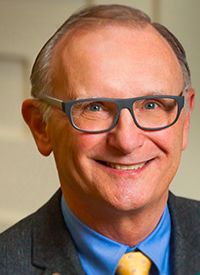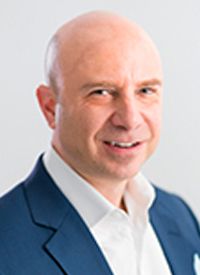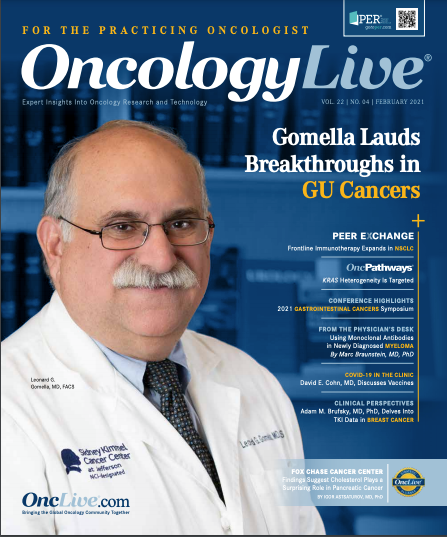Practices Grapple With an Aging Oncology Workforce
The COVID-19 pandemic may have stalled some physician retirements, but some experts are predicting an exodus of oncologists within the next 1 or 2 years. Practice managers are working now to mitigate the impact with both formal and informal initiatives.
Robin T. Zon, MD

The COVID-19 pandemic may have stalled some physician retirements, but some experts are predicting an exodus of oncologists within the next 1 or 2 years. Practice managers are working now to mitigate the impact with both formal and informal initiatives.
Overall, the number of oncologists involved in patient care has gradually grown over the past 10 years, according to a 2020 ASCO report. In 2018, 12,826 physicians were actively practicing as medical oncologists, hematologic oncologists, or hematologists, up from 9765 in 2009. Additionally, 7587 oncology providers identified as gynecologic, pediatric, radiation, or surgical oncology specialists (FIGURE 1).1
Concerns about the aging workforce are illustrated by the gap between older versus younger medical oncologists and hematologists. Among these specialists, 19.7% were 64 years or older in 2018 and 12.7% were younger than 40 years, a gap that has widened since 2010 (FIGURE 2).1
The prospect of retirements looms over the field, according to Robin T. Zon, MD, a medical oncologist and immediate past-president of Michiana Hematology Oncology (MHO) in Mishawaka, Indiana. She expects migrations to start in late 2021 or in 2022.
“As COVID-19 passes and vaccines become more widespread, there may be a bolus of doctors who retire or transition to new roles over the next 2 years,” Zon said in an interview. “Those who were close to retiring but stayed on to help patients through the crises may be more willing to exit as COVID19 becomes under control. On the other hand, the lack or severe reduction of preventive services as a result of the pandemic may be enough to sway physicians to stay on, especially if provided time off or staff support incentives. Time will be the judge.” The impact that retirements may have on oncology care is another question. In 2007, an ASCO report predicted that a shortage of oncologists was likely to develop by 2020 because of a rising demand for cancer services, an aging workforce nearing retirement, and a shrinking pool of new physicians seeking training in internal medicine.2
Michael P. Kosty, MD

Those concerns were repeated in a 2014 report, which found that the predicted shortage was delayed but still looming. Investigators said demand for services provided by oncologists and radiation oncologists could outstrip supply of these specialists by 2025.3
A shortage of oncologists has not materialized so far for several reasons, according to Michael P. Kosty, MD, a hematologist and oncologist who is medical director of Scripps Green Cancer Center in La Jolla, California. Kosty worked with ASCO to develop a system to track workforce information.
FIGURE 1. Oncology Specialists Working in Direct Patient Care1

“First, the recession of 2007-2008 kept many people in the workforce longer than they had planned,” Kosty said in an interview. “For financial or economic reasons, people may not have retired at the time they thought [they would].”
Second, steps to supplement oncology care through increased support for fellowship directors to recruit and train new oncologists and an expanded use of advanced practice providers (APPs) are having a positive impact. Several initiatives to foster interest in the oncology field among medical students have been showing progress.4
The proportion of practices employing APPs has grown with at least 5350 and as many as 7000 APPs in oncology positions, according to survey findings reported in 2018.5
Tom Florence

“The paradigm that we didn’t foresee in the early 2000s was the employment of advanced practice providers and their integration into cancer care,” Kosty said. “Oncology care has evolved from a monolithic single person providing the care to a team-based approach. Nurse practitioners, physician assistants, clinical pharmacists, social workers, etc, have played an increasing important role in patient care.”
Although the growth of such professions has eased the burden on the delivery of care, recruiting for oncologists remains challenging. Zon’s practice, like many independent centers, now uses an outside company to help with recruiting.
The pandemic paused or greatly slowed the physician search process, according to Tom Florence, executive vice president of recruiting for physician search firm Merritt Hawkins, based in Dallas, Texas. Health care systems tried to determine how to address COVID-19 and set up for a large volume of patients. Starting in June 2020, the demand for physician recruitment has increased across medical specialties, he said.
Hematology/oncology is the seventh most requested search field and the first in terms of demand, Florence said. Recruiting takes more time, and practices should start their search earlier than they need to fill a posi-tion. “It’s not impossible to recruit somebody; it just can take longer,” Florence said.
Debra Patt, MD, PhD, MBA

Retaining Specialists
Although demographic trends for the oncology workforce may not be in their favor, practice managers are looking to other strategies to retain specialists on their staffs.
Oncologists don’t necessarily age out of providing care because of physical limitations, as they might in some surgical specialties, said Debra Patt, MD, PhD, MBA, executive vice president of Texas Oncology and a practicing breast cancer specialist in Austin. “I have a lot of partners who are older, or past the average retirement age,” she said in an interview. “It’s a cerebral profession.”
Texas Oncology encourages practices to have programs in place that promote quality in oncology care and track compliance with evidence-based medicine guidelines. This helps all physicians maintain their knowledge base, but it is especially useful for older oncologists who are not required to sit for board certification-maintenance examinations every decade, as are younger colleagues.
The network, which stretches throughout Texas and southeastern Oklahoma, takes a team approach to care that helps lighten the load on oncologists. Texas Oncology has more than 500 oncologists whose work is supplemented with 150 APPs. Patt said that most community practices in the network have a 1:1 ratio of APPs to oncologists. The system has an APP leader and its own executive committee to onboard APPs.
Texas Oncology also sought to be sensitive to staff concerns related to COVID-19. During the early part of the pandemic, the network made a decision to keep older oncologists out of the hospital and allow younger physicians to take their calls. Now, with better screen-ing guidelines and protocols in the hospitals, facilities are safer and there’s less fear among providers about going to work, so physicians are back to their original rounding schedules.
At MHO, several strategies are aimed at attracting new physicians. The practice recently changed its corporate structure to a model where physicians are employees, which helps alleviate the financial risk a doctor faces and allows their focus to be on high-quality, cost-effective care. Although the change was made before the pandemic, the decision was reinforced when some payers delayed reimbursements during the crisis.
“The newer generation wants an employment model,” Zon said. Medical school does not prepare physicians for the financial realities and risks of running an independent practice. Given the costs of oncology treatments, physicians were increasingly uncomfortable being responsible for billing and waiting for reimbursement.
In addition, independent practices are not only competing against academic centers for new physicians but also, potentially, their local hospital. Zon, for example, said a hospital near MHO began hiring its own oncologists. The employment model helps level the playing field for independently owned practices compared with a hospital employment model.
The new approach also allows MHO to hire for part-time work, which may either help retain some oncologists or attract those who don’t want to work full time. It allows physicians who might otherwise retire to mentor younger colleagues and keep their knowledge in the practice.
One development related to the pandemic that might help with oncologist retention is the expansion of telemedicine. If these services continue to be authorized and reimbursed, it could “encourage physicians considering retirement to maintain some involvement in the profession,” Zon said.
References
- Key trends in tracking supply and demand for oncologists. American Society of Clinical Oncology. August 27, 2020. Accessed January 19, 2021. https://bit.ly/2RwnopZ
- Erikson C, Salsberg E, Forte G, Bruinooge S, Goldstein M. Future supply and demand for oncologists: challenges to assuring access to oncology services. J Oncol Pract. 2007;3(2):79-86. doi:10.1200/JOP.0723601
- Yang W, Williams JH, Hogan PF, et al. Projected supply of and demand for oncologists and radiation oncologists through 2025: an aging, better-insured population will result in shortage. J Oncol Pract. 2014;10(1):39-45. doi:10.1200/JOP.2013.001319
- Leon-Ferre RA, Stover DG. Supporting the future of the oncology workforce: ASCO medical student and trainee initiatives. J Oncol Pract. 2018;14(5): 277-280. doi:10.1200/JOP.17.00088
- Bruinooge SS, Pickard TA, Vogel, W, et al. Understanding the role of advanced practice providers in oncology in the United States. J Oncol Pract. 2018;14(9):e518-e532. doi:10.1200/JOP.18.00181




